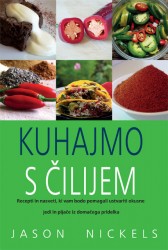About 3 weeks ago I wrote a piece on moving chilli plants outdoors. It is often difficult to judge when it is OK to do it, and it is always a compromise, it is where I live anyway.
So I thought I’d update people as to what my plants are up to. Generally, I keep all mine in the greenhouse until they grow so big I have no choice, and if any go outside I’m always picky and try to keep the best ones under glass.
This time, just as an experiment I planted one outside on our patio in a stone pot to see what happens. I did this much earlier than I would normally do, but in doing so I was mimicking the dilema which most chilli growers that don’t have a greenhouse. I also put one in a raised bed, and kept the others from the same batch inside.
And after about 3 weeks, here are some results.

The outdoor plant has had some pretty good weather, not perfect, but OK. It has had warm days and cool nights to start with, some rain, a fair bit of wind, and not too much in the way of pest damage, just a couple of nibbled leaves as you can see. But this has still taken its toll, down to 8°c on some nights, some cool winds and a max of maybe 23°c in the day times isn’t ideal. The leaves are curled and quite tough, but mainly the plant has grown slowly, maybe 20cm high and hardly branched out with not many extra leaves, though it is starting to flower.
I stress that this plant hasn’t been neglected at all, it has beeb watered whenever it needed it, fed, staked, and moved about to shelter it from the worst of any wind.

The one in the raised bed (above), has fared better. The leaves have toughened, but not curled much, it has more side shoots and the flowers are more developed. This is because it has been protected from the elements with green mesh around and over the bed too stop the wind and raise the temperature, the soil temperature is warmer and more stable too.

The third one (above), has been kept in the greenhouse all the time, and has grown a lot more. It is taller and probably has twice the amount of foliage than the outdoor one, there are more side shoots, more flower buds and it is looking generally more healthy.
All these plants are the same variety, grown alongside each other until they were separated for this experiment. They are a variety called Nigel’s Outdoors, not one I have grown before, nor one I am familiar with. The seeds came to me as part of a swap I did with Alex the Air-Pot Gardener, a friendly chilli grower here in the UK. I assume it has been bred, (no doubt by someone called Nigel), to be more tolerant to the conditions of my experiment. Other varieties may not have fared even as well as this one. I suspect a similar experiment with habanero plants would have resulted in the outdoor plants not growing at all.
So what is the lesson here?
- In temperate climates keep your chilli plants indoors for as long as you can, it will pay dividends.
- Don’t expect too much from your chilli plant if you put it outdoors before the warm summer nights and while it is still young and tender.
- The outdoor plant won’t grow as quickly and you won’t get as much of a crop.
Watch this space for another update in a few weeks. I suspect we might be picking fruit of the one in the greenhouse.







